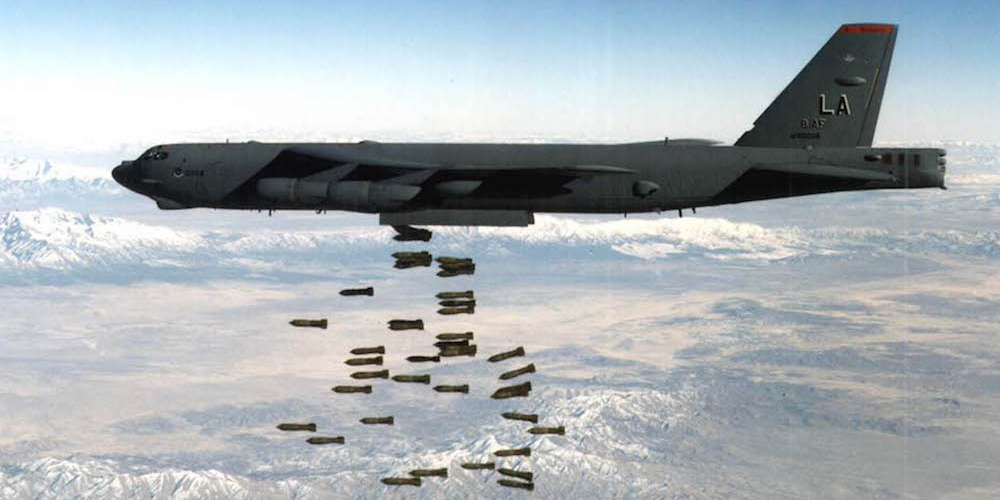
Reuters/US Air Force file photo
- The United States is providing Ukraine with cluster bombs it says have a failure rate of 2.35%.
- But past use suggests "failure rates of 10% to 30%," according to a report prepared for Congress.
- Cluster bombs that fail to explode can pose a risk to civilians for decades to come.
The US claim that the cluster bombs it's sending to Ukraine have a failure rate of less than 3% is unlikely to hold up under real-world conditions, with past use of the widely-banned weapon suggesting as many as 3 in 10 fail to explode.
At a press conference on Friday announcing the transfer, Colin Kahl, US undersecretary of defense for policy, said that the "dud" rate for US-provided 155-millimeter DPICMs, or dual-purpose improved conventional munitions, is just 2.35%. He compared it to the alleged failure rate for Russian cluster munitions of 30-40%.
"I'm as concerned about the humanitarian circumstance as anybody," Kahl said. "But the worst thing for civilians in Ukraine is for Russia to win the war."
The failure rate is important because each cluster bomb that does not explode immediately is a threat to explode later when the war is over. In Laos, for example, littered with US cluster munitions from the 1970s, thousands of people have died during peacetime from stepping on or picking up unexploded ordinance.
Most countries have banned cluster bombs, citing the long-term threat they pose to civilians. The US, Russia, and Ukraine have not.
'Failure rates of 10% to 30%'
Russia has been criticized not just for using cluster bombs but for deploying them in densely populated civilian areas. Ukraine insists it will only use cluster bombs against military targets, with experts saying that, against entrenched Russian forces in the east of the country, they are a particularly effective substitute for the 155 mm artillery shells it's running out of (and which the US cannot manufacture quickly enough to replace).
But as The New York Times reported, past use of the particular munitions the United States is providing suggests a far greater potential harm to civilians in the aftermath of any battle, with an Army study from 2000 indicating a failure rate of up to 14% for artillery-fired M42/46 submunitions.
The US military has said it will select from its stockpile only cluster munitions that have been assessed to have a failure rate of 2.35%. But even so, there has been a gap between past claims of the weapon's effectiveness and actual experience.
A 2022 report from the nonpartisan Congressional Research Service noted that, despite manufacturers claiming a dud rate of just 2 to 5% for their cluster munitions, experts in real-world cleanup operations "have frequently reported failure rates of 10% to 30%."
Defenders of the decision to send Ukraine cluster bombs argue that the weapons will ultimately save lives by pushing back a Russian occupation force accused of war crimes, including torturing and killing civilians.
In an interview with CNN on Friday, President Joe Biden said the decision to send Ukraine cluster bombs was "very difficult" but cast it as necessary given that the country is running out of alternatives, namely the artillery shells that the United States had previously provided.
"This is a war relating to munitions," he said. "And they're running out of that ammunition."
Have a news tip? Email this reporter: [email protected]
Read More
By: [email protected] (Charles R. Davis)
Title: The US says the cluster bombs it's giving Ukraine fail less than 3% of the time. Experience suggests the real number is far higher.
Sourced From: www.businessinsider.com/cluster-bombs-us-ukraine-fail-30-percent-of-the-time-2023-7
Published Date: Sat, 08 Jul 2023 15:20:10 +0000
Did you miss our previous article...
https://trendinginbusiness.business/business/apples-basic-ipads-fall-to-record-249-for-amazon-prime-day
.png)





